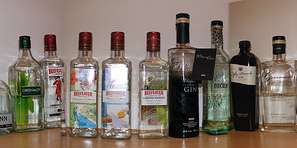
One of my cousins has been a bartender for long enough that at family gatherings our relatives have stopped asking when she’s going back to nursing school. She never did seem that interested in the medical profession. Works for me. While I might ask someone else for help if I needed the Heimlich maneuver, I’d unhesitatingly go to this cousin for advice on cocktails. Seeking to better her knowledge of her chosen profession, she’s a regular on the craft distillery tour circuit. She’ll even plan trips to far-flung cities to get a taste of the gins, whiskeys, rums, piscos, baijiu’s, and sometimes moonshine!
She and I both like gin, and lacking any true knowledge of the subject on my own, I follow her advice on gin brands unfailingly. This last Thanksgiving, she surprised me by changing course, telling me to avoid a gin we’d been drinking together for years. “They’re no good anymore,” she said. “It’s been coming out cloudy.” As always, I took her advice.

Customers expect crystal clear, water white gin. Image Credit: Flickr User Graeme Maclean (CC BY 2.0)



